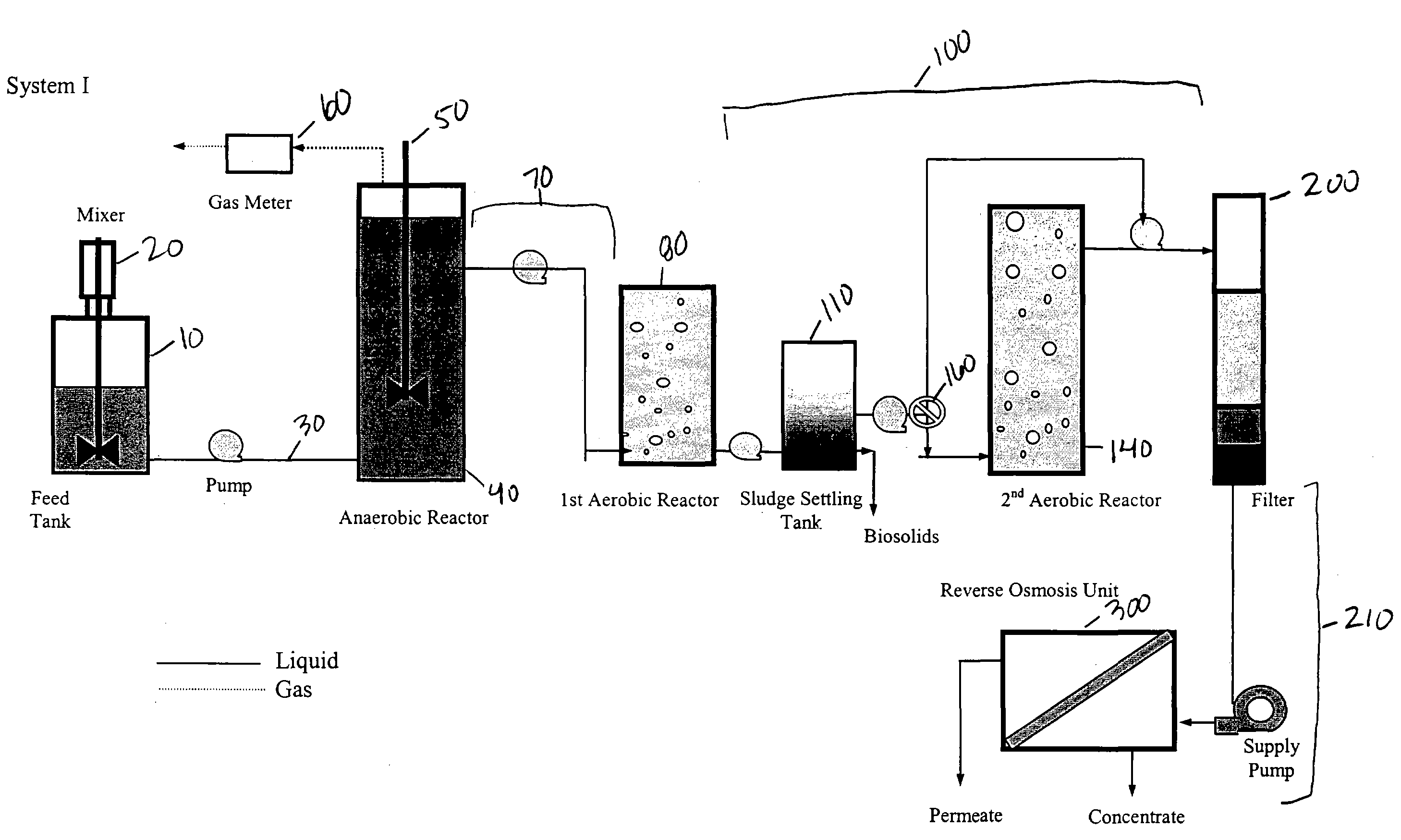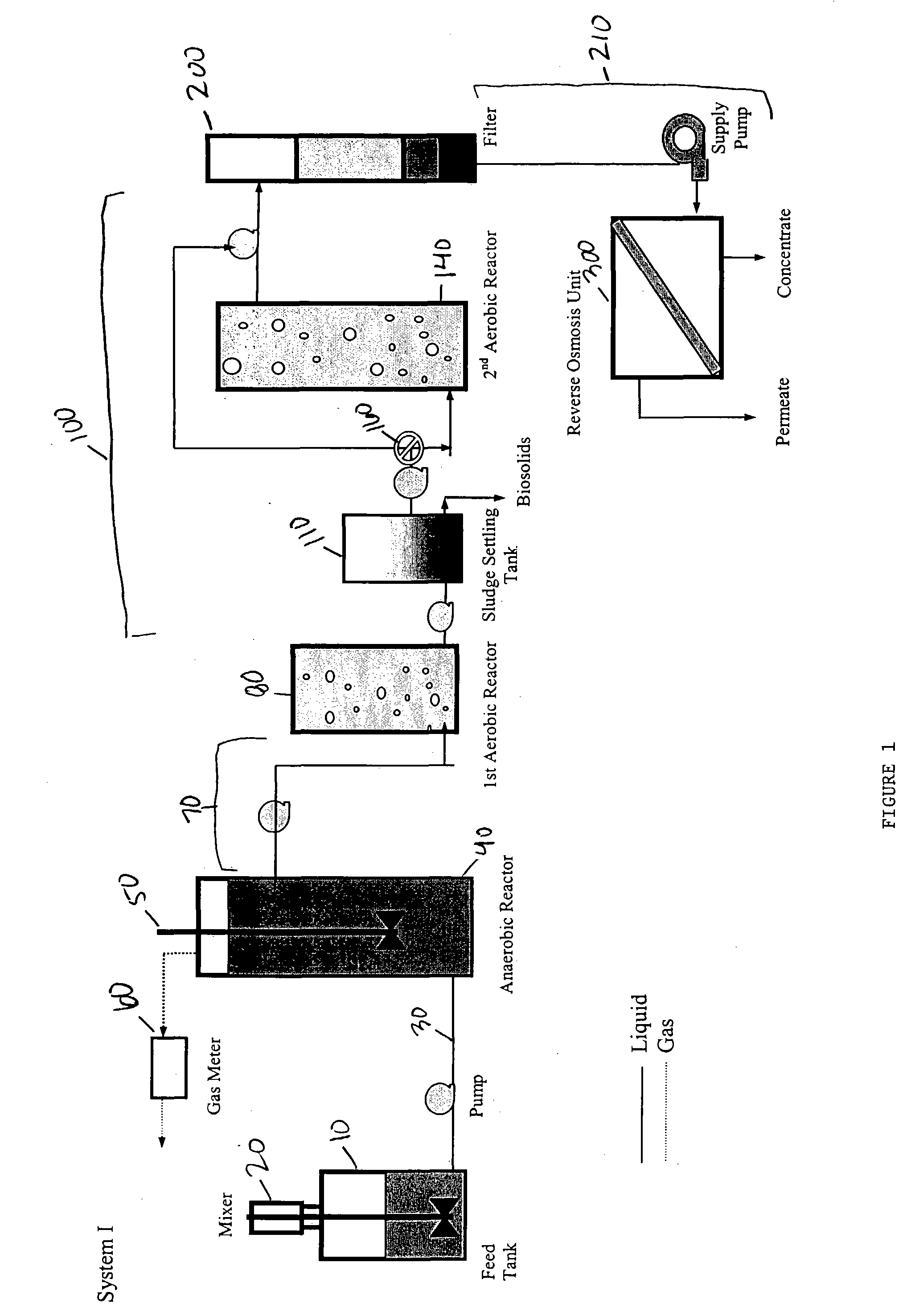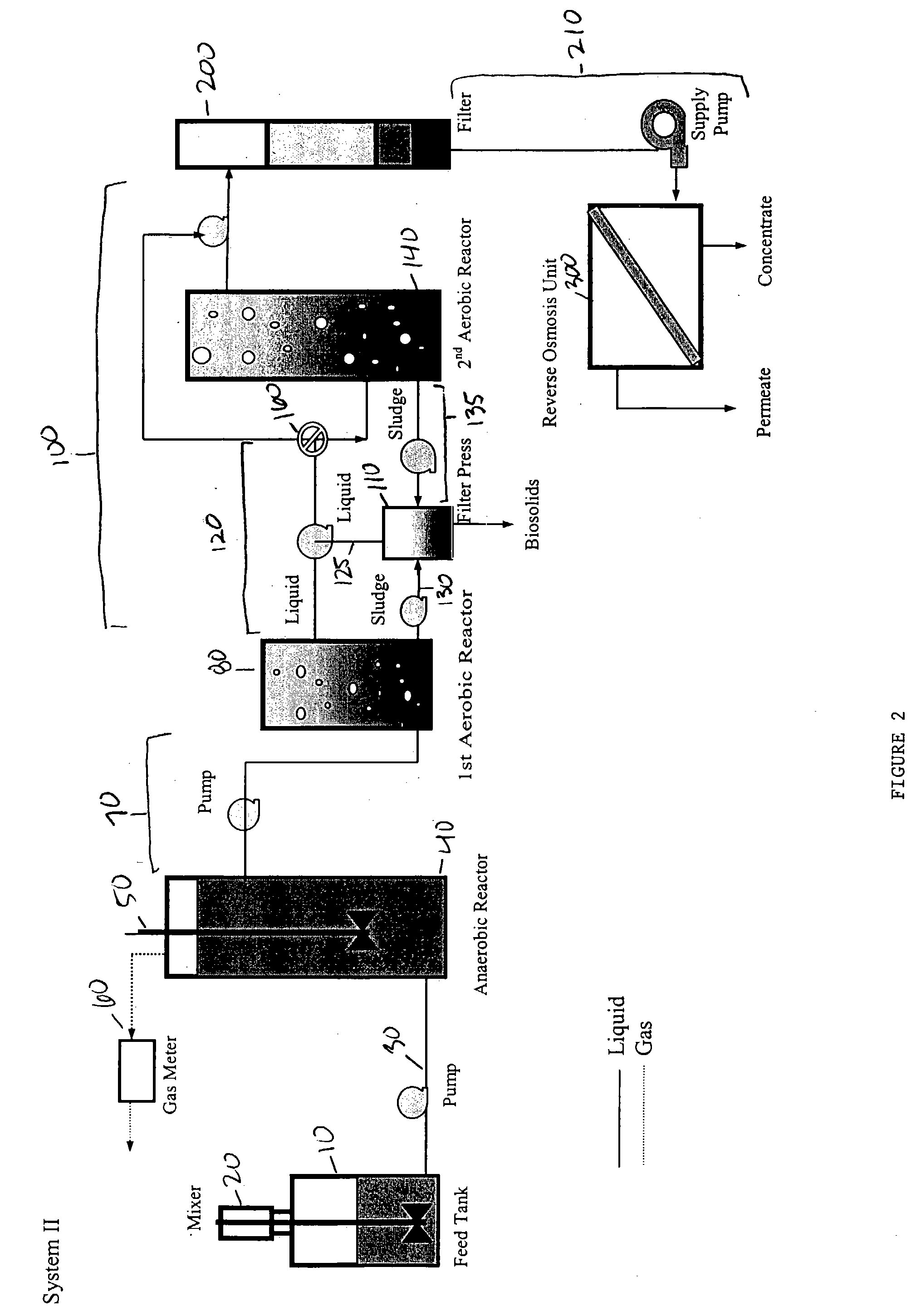Treatment of swine wastewater by biological and membrane separation technologies
a technology of biological and membrane separation and swine wastewater, applied in the direction of membranes, multi-stage water/sewage treatment, other chemical processes, etc., can solve the problems of waste management and the normal economic disadvantage of reclaiming clean water from animal wastewater
- Summary
- Abstract
- Description
- Claims
- Application Information
AI Technical Summary
Benefits of technology
Problems solved by technology
Method used
Image
Examples
example 1
Swine Manure Collection and Preparation
[0104] Swine manure was collected on the Swine Research Farm of the University of California at Davis (UC Davis). The pigs on the farm were 16-20 weeks old. The manure was collected from a concrete floor and tap water was added to make a slurry. The manure slurry was screened with two sieves having openings of 4×4 mm and 2×2 mm, respectively, to remove hairs and large particles. The screened manure was immediately stored in a freezer at −20° C. until use. When needed, the stored manure was thawed, analyzed, and diluted with tap water to obtain desired volatile solids (VS). Due to loss of urine prior to manure collection, the collected manure contained a relative low content of NH3—N. Urea was added into the manure to increase the NH3—N concentration to a typical level found in fresh manure on commercial swine farms. The prepared manure was then stored in a refrigerator at 4° C.
example 2
Anaerobic Treatment of Swine Manure Wastewater
[0105] Prepared swine manure was used as feed for Anaerobic Sequencing Batch Reactor (ASBR). The ASBR was designed to treat swine manure with 1.5% volatile solids (VS). This solid level is within the VS range encountered in swine manure collected in a typical pit-recharge or flushing system. The ASBR was initially seeded with 10 liters of sludge obtained from a mesophilic anaerobic digester at Davis Wastewater Treatment Plant. The total solids (TS) and VS of the seed sludge were 5.3% and 3.1%, respectively.
[0106] The ASBR was first started at a loading rate of 0.5 gVS / L / day using swine manure of 1% TS as the influent. The loading rate was increased to 1.0 gVS / L / day. After the ASBR reached steady state operation as indicated by steady daily biogas production, the influent TS was increased to 1.5% and the loading rate was gradually increased to 3 gVS / L / day as shown in Table 1. After the ASBR reached a steady state at 3 gVS / L / day, the eff...
example 3
Aerobic Treatment of Swine Manure Wastewater
[0112] The effluent of ASBR was directly decanted into SBR1 for further treatment. The treatment objective of SBR1 was to further reduce the organic matter and remove suspended solids from the liquid effluent. Ammonia oxidation (nitrification) was controlled at a low level by using relatively short HRT and solid retention time (SRT). The SBR1 was initially seeded with the activated sludge obtained from an oxidation ditch at the Wastewater Treatment Plant of the University of California at Davis. SBR1 was operated at two day HRT with dissolved oxygen (DO) controlled at approximately two mg / L. SBR1 was aerated with compressed air that was humidified by traveling through a 15-liter water container at a flow rate of 1.75 L / min. Air was delivered into the reactor through two air stone diffusers installed near the bottom of the reactor to ensure even air distribution.
[0113] The operating sequence of SBR1 was the same as ASBR, but sludge draw w...
PUM
| Property | Measurement | Unit |
|---|---|---|
| temperature | aaaaa | aaaaa |
| density | aaaaa | aaaaa |
| temperature | aaaaa | aaaaa |
Abstract
Description
Claims
Application Information
 Login to View More
Login to View More - R&D
- Intellectual Property
- Life Sciences
- Materials
- Tech Scout
- Unparalleled Data Quality
- Higher Quality Content
- 60% Fewer Hallucinations
Browse by: Latest US Patents, China's latest patents, Technical Efficacy Thesaurus, Application Domain, Technology Topic, Popular Technical Reports.
© 2025 PatSnap. All rights reserved.Legal|Privacy policy|Modern Slavery Act Transparency Statement|Sitemap|About US| Contact US: help@patsnap.com



